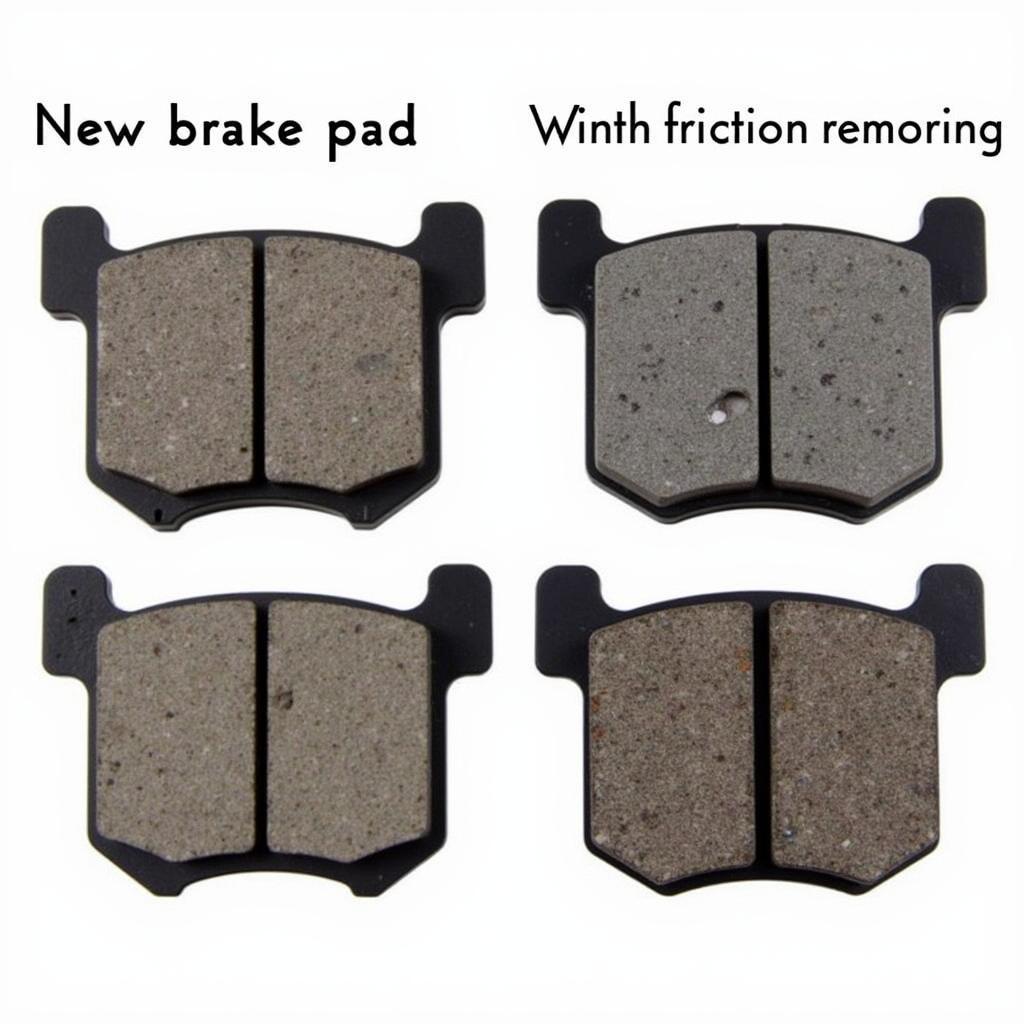A “C1226 brake warning lamp ground short” code popping up on your car’s diagnostic scanner can be alarming. This code signifies a problem within the electrical system controlling your brake warning light, specifically a short circuit related to the ground wire. While this might sound intimidating, this comprehensive guide will break down the C1226 code, its causes, symptoms, diagnosis, and potential solutions, empowering you to address this issue head-on.
Understanding the C1226 Code
In essence, the C1226 code points to an issue where the brake warning lamp’s ground circuit has an abnormally low resistance path to ground. This “short circuit” disrupts the normal flow of electricity, preventing the warning lamp from illuminating correctly when it should.
Common Causes of a C1226 Code
Several factors can contribute to a C1226 code:
- Damaged Wiring: The most common culprit is damaged wiring within the brake warning lamp circuit. Wear and tear, rodent damage, or improper installation can expose wires, leading to shorts.
- Faulty Brake Light Switch: The brake light switch, responsible for sending the signal to illuminate the warning lamp, can malfunction and cause a short circuit.
- Damaged Instrument Cluster: In some cases, a faulty instrument cluster, where the warning lamp is housed, can cause a C1226 code.
- Loose Ground Connection: A loose or corroded ground connection within the circuit can disrupt the electrical flow, triggering the code.
Recognizing the Symptoms
Recognizing the symptoms associated with a C1226 code is crucial for timely diagnosis and repair:
- Illuminated Brake Warning Lamp: The most obvious symptom is a brake warning lamp that remains illuminated even when the brakes are not applied.
- Dim or Flickering Brake Warning Lamp: In some instances, the lamp may appear dim or flicker intermittently, indicating a potential short circuit.
- Other Electrical Issues: A ground short can sometimes affect other electrical components, leading to erratic behavior in lights, gauges, or other systems.
Diagnosing the C1226 Code
Accurately diagnosing a C1226 code typically requires a systematic approach:
- Retrieve Diagnostic Trouble Codes (DTCs): Using an OBD-II scanner, retrieve any stored DTCs. The C1226 code confirms the presence of a ground short.
- Visually Inspect Wiring and Connections: Begin by visually inspecting the brake warning lamp circuit for any signs of damage, wear, loose connections, or corrosion. Pay particular attention to areas where wires might rub against sharp edges.
- Test the Brake Light Switch: Using a multimeter, test the continuity of the brake light switch. A faulty switch will show inconsistent readings.
- Check the Instrument Cluster: Inspect the instrument cluster for any signs of damage or loose connections. In some cases, a faulty cluster might need replacement.
- Inspect Ground Connections: Ensure all ground connections within the circuit are secure and free from corrosion. Clean or tighten any suspicious connections.
Potential Solutions for a C1226 Code
Once you’ve pinpointed the root cause, resolving a C1226 code often involves:
- Repairing or Replacing Damaged Wiring: If damaged wiring is identified, repair or replace the affected sections with the appropriate gauge and type of wire.
- Replacing the Brake Light Switch: A faulty brake light switch will require replacement with a new one.
- Repairing or Replacing the Instrument Cluster: Depending on the severity of the issue, repairing or replacing the instrument cluster might be necessary.
- Cleaning or Tightening Ground Connections: Clean any corroded ground connections using a wire brush and apply dielectric grease to prevent future corrosion. Ensure all connections are secure.
“It’s crucial to address any electrical issue promptly,” advises John Smith, Senior Automotive Electrician at XYZ Auto Services. “Ignoring a seemingly minor ground short can lead to more significant problems and potentially compromise safety.”
Preventing Future Occurrences
Taking proactive measures can minimize the risk of encountering a C1226 code again:
- Regular Vehicle Inspections: Regularly inspect your vehicle’s wiring harnesses for any signs of wear, damage, or loose connections, especially in areas prone to vibration or exposure to the elements.
- Promptly Address Electrical Issues: Don’t ignore warning signs like flickering lights or unusual behavior in electrical components. Address them promptly to prevent escalation.
- Professional Installation: Always opt for professional installation of any aftermarket electrical components or accessories to ensure proper wiring and grounding.
Conclusion
While encountering a “C1226 brake warning lamp ground short” code can be concerning, understanding its causes, symptoms, and solutions can empower you to address it effectively. By following the diagnostic steps outlined and taking proactive measures, you can ensure the proper functioning of your vehicle’s braking system and maintain optimal safety on the road. Remember, if you are uncomfortable with any aspect of diagnosing or repairing electrical systems, it’s always best to consult with a qualified automotive electrician.

